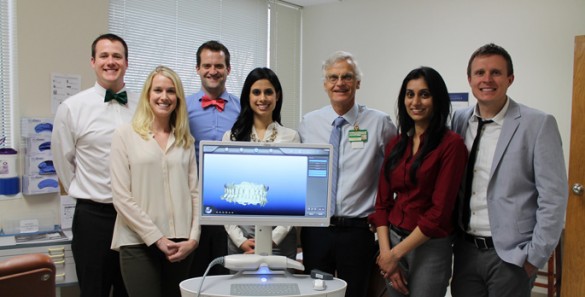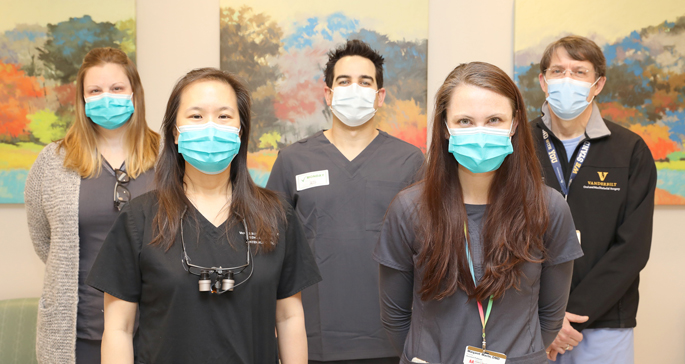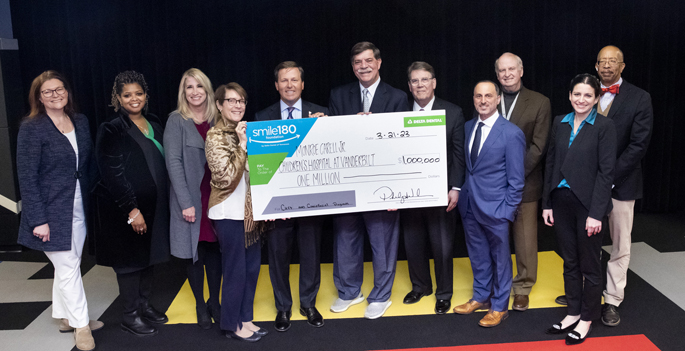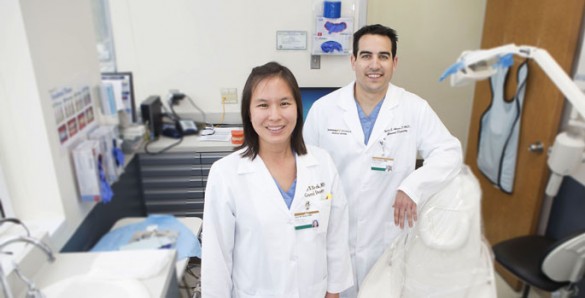
A new digital scanner for teeth is allowing Vanderbilt Orthodontic patients of all ages to have dental impressions for procedures such as Invisalign — clear removable teeth aligners similar to braces — created without the gagging or bad taste that accompanies traditional methods.
Marion Messersmith, DDS, M.S., chief of the Division of Orthodontics, and his six residents are using a new iTero scanner for dental impressions and saving that information digitally rather than storing the hundreds of plaster models they create for patients each week.
The scanner allows patients to avoid taking traditional impressions with a Silly Putty-like material and instead use the machine to take an “impression” of both their upper and lower teeth.
“My personal view is that digital impressions and clear aligner treatment is the future of orthodontics,” Messersmith said. “Dental impressions can be uncomfortable due to gagging, the need to open the mouth wide and the taste of the material. Using the iTero or comparable scanner technology is very simple for the patient, and the need to take additional impressions due to distortion, breakage or loss is eliminated.”
Likewise, storage and retrieval of thousands of plaster models is a constant challenge for orthodontic residency programs considering that before-and-after models are constructed for each patient, up to 40 a day. Now, in finishing cases, the orthodontists will do digital scans that can be printed, unless they need the plaster models for board cases.
“One of the problems that residencies have is how to store and retrieve all of these plaster models,” Messersmith said. “Digital impressions eliminate model storage and model retrieval problems. Digital scans are always going to be there and always going to be available.”
Messersmith said that, traditionally, only 10-20 percent of an orthodontist’s patient load was adults. But today, an orthodontist may have up to 30-60 percent adult patients and there are some practitioners who only have adult patients. The desire for tooth alignment is partly technology-driven but he believes the primary driver is aesthetics.
“Everybody wants to look good, whether they are 10 years old or 90 years old. We have patients in their 70s who are getting their teeth straightened,” he said. “If you feel good about yourself it changes how you act and it is just the icing on the cake for some of our patients.”
Dentofacial deformity and craniofacial (cleft lip and/or palate) patients come to Vanderbilt from all over Tennessee and Kentucky, but the primary draw for the orthodontic practice on the 3rd floor of the Village at Vanderbilt is routine orthodontic treatment for Vanderbilt faculty, staff and their families.
“We have so many adult patients here — nurses, doctors, staff — who would like to have their teeth straightened using Invisalign. We are really convenient and our patients receive University pricing for their treatment. We provide ‘state of the art’ clear aligner orthodontic treatment and we are always looking for ways to improve our quality of care.
“That is one of the biggest reasons we got this scanner. We want to treat every Vanderbilt faculty, staff and family member who wants Invisalign or regular braces treatment,” Messersmith said.















